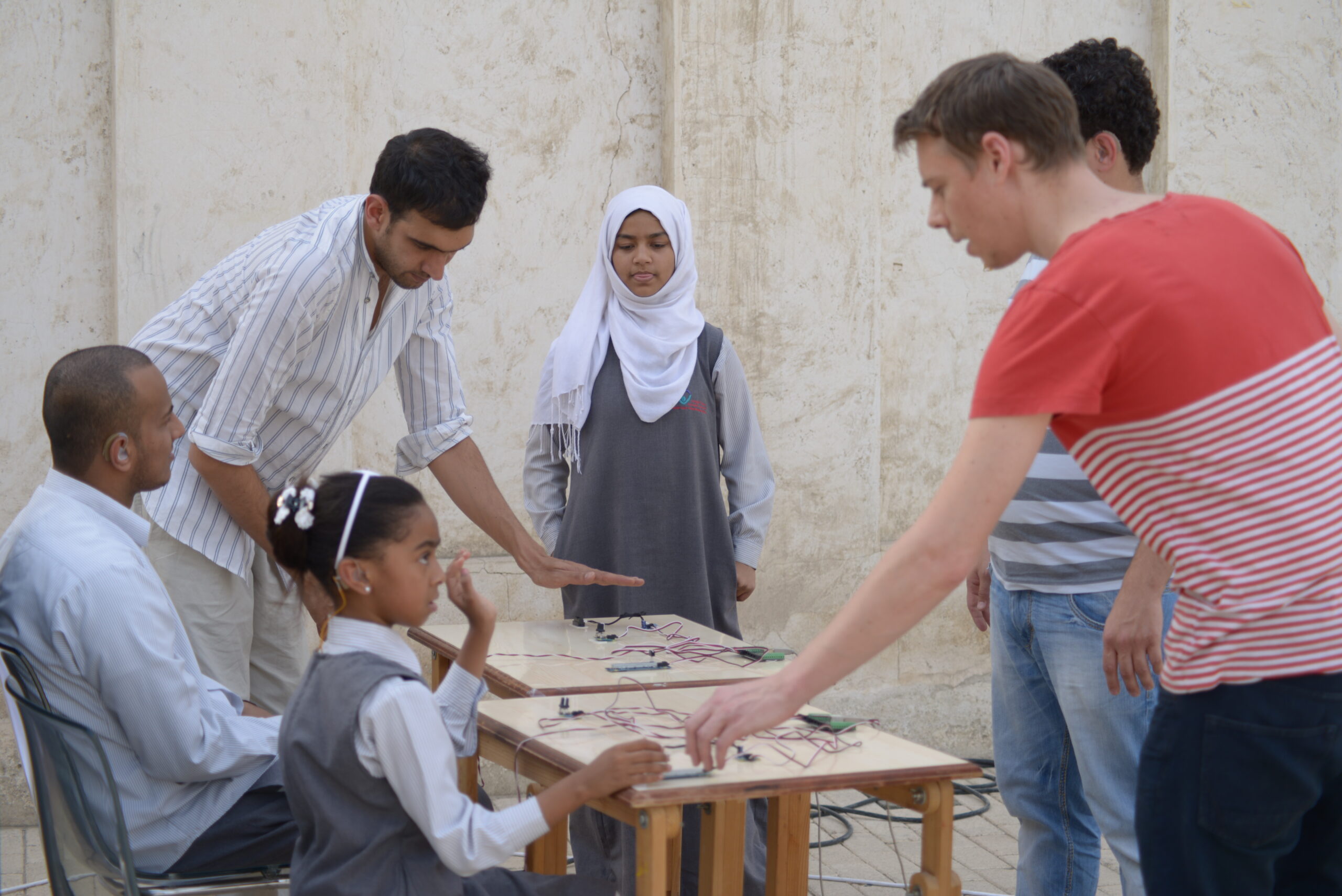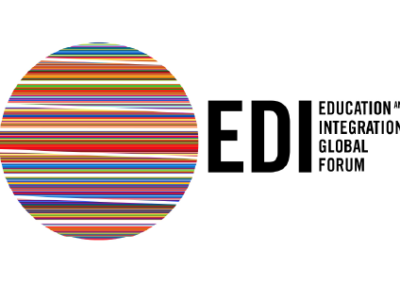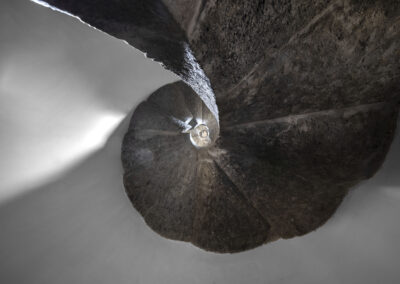
CATEGORY
Accessibility | Diversity/ Inclusion | ParticipationYEAR
2013-2019DURATION
6 yearsLOCATION
OnsiteFORMAT
Workshops and exhibitionsWEBSITE
http://www.council.art/inquiries/30/infinite-earTARGET
Individuals who situate themselves in different parts of the Deaf spectrumWhat if the journey in the deaf spectrum was considered as a gain and not as a loss? Following the provocative proposal by H-Dirksen L. Bauman and Joseph J. Murray in the famous essay “Deaf Gain: Raising the Stakes for Human Diversity”[1], Infinite Ear inquired about the transformations of hearing with d/Deaf knowledge.
Operating at the intersection of arts, sciences and Deaf culture, Infinite Ear was a long-term collaborative research with deaf and hard-of-hearing people around accessing and imagining sound through the making of music, exhibition and institutions.
Initiated in 2013 as a commission by Al Amal School for the Deaf and the Sharjah Art Foundation in the United Arab Emirates, Infinite Ear has gathered visual artists, sign language interpreters, musicians, dancers, architects, and writers through a series of workshop and learning programs leading to events, collective exhibitions and new works.
More than 50 artists took part in Infinite Ear. The core group of the participants included:
- sound artist Tarek Atoui
- Filmmaker Alison O’Daniel
- performers Lendl Barcelos, Valentina Desideri, and Myriam Lefkowitz
- choreographer Noe Soulier
- Sharjah Biennial: working with students from the Al Amal School for the Deaf on their tactile perception of sound and their interpretation in Sign Language
- MoMA PS1, New York: continuation of the work on the interpretation of sound with sign language, leading to a choreographic performance by Noe Soulier and Jeffrey Mansfield
- Bergen Assembly: installation of sound instruments by Tarek Atoui, turning a former swimming pool into a workshop and concert space. A hundred works of art and objects were displayed as a network of reference. Testing of an experimental mediation based on sign language and sensing conceived by Lendl Barcelos, Valentina Desideri, and Myriam Lefkowitz
- Garage Museum of Contemporary Art, Moscow: The experimental mediation and the sound instruments became two of the main elements of the exhibition. The third one was an immersive video installation by Alison O’Daniel. The exhibition was proposed to most of the audience as individual and group mediations taking the shape of a sensorial journey to heightened tactile and visual dimensions of hearing.
- CentroCentro, Madrid: In addition to similar elements as the previous version, this exhibition critically reflected on homogenisation of art experience with accessibility tools. It proposed texts and situations that considered the asymmetry of neural conditions.
LINKS
FILES
AUDIO






